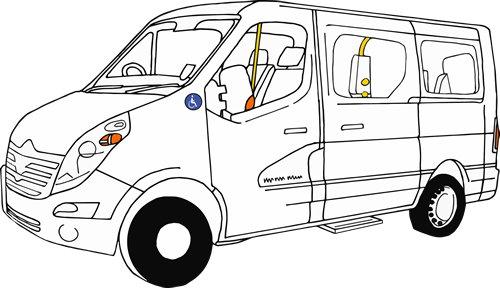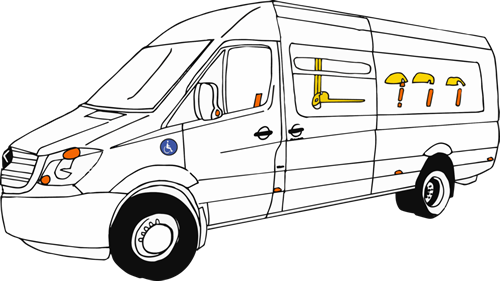We understand that the most important consideration when specifying a custom built minibus is to ensure the safety and convenience of your passengers. Whilst this is an aim shared by most of our customers, there are myriad ways to achieve it. The sheer number of options on offer can seem overwhelming so, to help to simplify the process, we have developed this guide to take you through them step-by-step.
In addition to this guide, we have provided videos which further explain the options, and also the considerations we suggest buyers have in mind when specifying a new minibus. In each section, the guide explains what’s possible, as well as what’s available.
First Step
The most important preference to establish is your planned use of the vehicle: the number and type of passengers you expect to be carrying on any one journey. Key to this is anticipating the number of seated passengers versus the number of passengers travelling in a wheelchair.
As your minibus may be your primary, or only, wheelchair-accessible vehicle, we suggest you ensure it can accommodate all of your likely wheelchair users as a priority. Only you, the operator, can decide on the ideal balance of accommodation but if you need assistance to work this out, our team are always happy to help.
Minibus size guide
To complicate matters, each manufacturer describes their vehicles in different ways. Whilst there is some common language and agreed vehicle size codes, it is not always easy to make direct comparisons between models.
To facilitate comparisons and aid decision-making, we have adopted terminology throughout this guide to indicate the typical steps up in size from one minibus category to the next. As in all things minibus, there will be exceptions to the rules but where there are specific questions over combinations of make, passenger configurations and conversion components we are always on hand to talk you through the process.
Size guide codes
 | L1H1 = Length 1, Height 1 or Short wheelbase, Low roof | |
 | L2H2 = Length 2, Height 2 or Medium wheelbase, High roof | |
 | L3H2 = Length 3, Height 2 or Long wheelbase, High roof | |
 | L4H2X1 = Length 4, Height 2 or Extra long wheelbase, High roof (The L4H2 models have two possible length variations coded as X1 and X2) | |
 | L4H2X2 = Length 4, Height 2 or Extra long wheelbase, High roof (The L4H2 models have two possible length variations coded as X1 and X2) | |
 | L4H3 = Length 4, Height 3 or Extra long wheelbase, Extra High roof |
Some points to note...
As you work your way sequentially through the guide, at various stages you’ll see the many options available to you. Your choices may also be restricted depending on the options you select - for example, the type of wheelchair access may be determined by the vehicle size or drive orientation, but you’ll usually have a choice of a wheelchair ramp, an internal lift or an underfloor cassette, all of which have their merits.
Please note that manual ramps only suit a handful of front-wheel drive vehicles. Rear-wheel drive vehicles must be specified with a tail lift. The vehicle will be fitted with a seat tracking system, which will also provide the anchorage points for wheelchair restraints.
There are myriad seating options. On some configurations, having the flexibility to provide space for a wheelchair “on the move” may be required and can be worked into the design. A vital consideration will be the seat covering; some fabrics are easier to clean than others, and some waterproof. If comfort is key, you may tend towards the latest flat fabrics or even faux leathers.
The base vehicle will have been designed to ventilate and heat the driver, not the loadspace, and although some systems may be adequate for a passenger saloon, there are plenty of upgrade options available, from sliding window vents to coach style roof vents, and from economical diesel-fired heaters to air conditioning units.
Every vehicle needs stowage for the restraints and webbing but can also be equipped with overhead lockers, lockable compartments, luggage pens, racking, roof stowage systems and even cycle carriers. Often, adding simple stowage utilises a spare corner and need not reduce seating capacity.
The concluding section of this guidance highlights areas of legislation that may affect you, so please read it carefully.
And finally...
This guide will take you through all the options in a logical order, so you have a realistic target for your next new minibus, but we know there’s no substitute for the personal service Minibus Options’ staff can provide. When you are ready to create your specification, call us on 01663 735355 and our experienced team will double-check your wish list and provide comparisons and suggestions appropriate to your specific needs.









